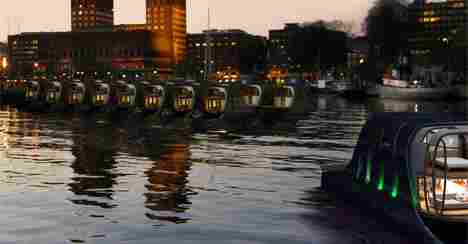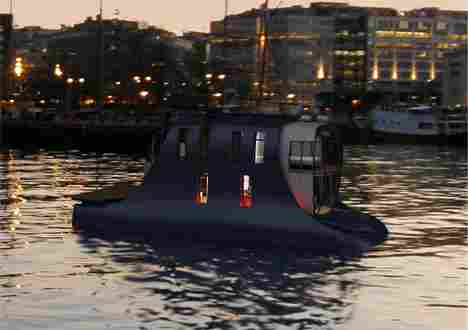{"title":"Sustainable Prefab Homes by ARCspace","author_name":"Yanko Design","author_url":"https://www.youtubeom/channel/UCVohuIZpji5uTdzychBxKcw","type":"video","height":"591","width":"1050","version":"1.0","provider_name":"YouTube","provider_url":"https://www.youtubeom/","thumbnail_height":"360","thumbnail_width":"480","thumbnail_url":"https://i.ytimgom/vi/tI-9HxEYTDM/hqdefault.jpg","html":"<iframe width="1050" height="591" src="https://www.youtubeom/embed/tI-9HxEYTDM?feature=oembed" frameborder="0" allow="accelerometer; autoplay; clipboard-write; encrypted-media; gyroscope; picture-in-picture" allowfullscreen></iframe>","arve_cachetime":"2021-08-03 16:42:18","arve_url":"https://youtu.be/tI-9HxEYTDM","arve_srcset":"https://i.ytimgom/vi/tI-9HxEYTDM/mqdefault.jpg 320w, https://i.ytimgom/vi/tI-9HxEYTDM/hqdefault.jpg 480w, https://i.ytimgom/vi/tI-9HxEYTDM/sddefault.jpg 640w, https://i.ytimgom/vi/tI-9HxEYTDM/maxresdefault.jpg 1280w"}
ARCspace began as a pilot program as a potential solution to the extreme homelessness crisis in L.A. but has now grown into a range of several accommodation options ranging from 160 to 10,000 square feet.
The construction industry is responsible for 28% of the global emissions and construction-related industries like glass and cement add another 10% to the global emissions. If you think about it 38% of the world’s emissions is a lot and if we find sustainable solutions for the construction industry, we can make a large positive impact rather quickly because it will ripple out to related industries and therefore we can scale up sustainable development faster. I know it is an unlikely approach, but to make the biggest dent when solving a problem we have to start by untangling the biggest knot! ARCspace is a modular architecture firm that is constantly creating innovative designs and material development to do its part in curbing the emissions for their industry using sustainable, affordable, prefabricated homes .
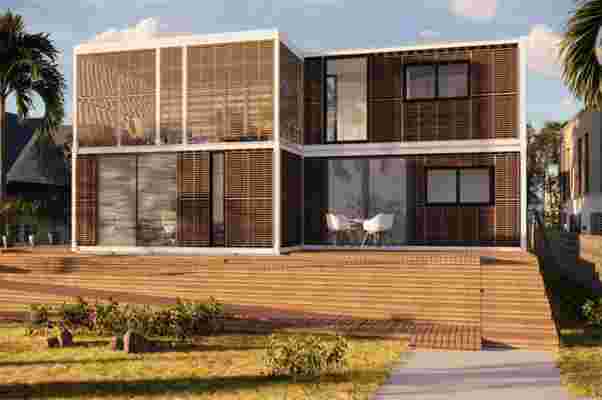
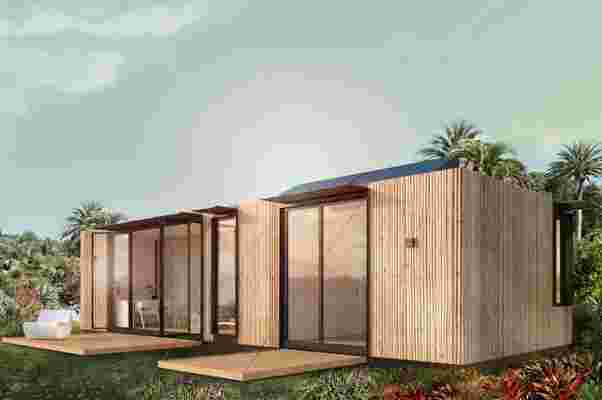
Fun Fact: ARCspace is a division of Sustainable Building Council Ltd., located in the Los Angeles Cleantech Corridor so as a parent company, the goal of Sustainable Building Council Ltd. is to bring together experts in construction, architectural design, engineering, building, environmentalism, and innovative technology to address housing needs around the world. The mission is to work together to create efficient, cost-efficient, and long-lasting housing. It began as a pilot program as a potential solution to the extreme homelessness crisis in L.A. but has now grown into a range of several accommodation options ranging from 160 to 10,000 square feet. All structures are prefabricated for highly efficient and quick builds which reduce emissions and minimizes waste. ARCspace reports the buildings are “spec-built from the ground up in 40-60% less time and cost than traditional construction.”
Residents can fully customize their tiny homes or even scale up to the size of traditional homes and have a huge range of interior design details to choose from including optional elements that provide off-grid power and water. Some homes feature self-contained atmospheric water generators called Hydropanels that are grid-independent and pull a few liters of drinking water out of the air each day. Affordable solar panels are another add-on option, however, the primary supply still comes from onsite plumbing and electrical systems. Units can be linked end to end or stacked up to four units high with stairways connecting each unit.
In addition to avoiding toxins in construction, ARCspace puts a focus on smart home features that are energy-efficient and healthy. The company employs a variety of sustainable technologies such as environmentally friendly, vegetable-based spray foam insulation and specialized window coatings that keep excessive heat out while allowing natural light in. It also uses recycled materials throughout, including for decking and outer cladding. For temporary work sites or emergency housing needs, impermanent foundations mean the units can be relocated with minimal site impact. They can also be set up in as little as 24 hours once onsite with a small team using cranes to stack modules then following up with window installations.
High-grade steel is the primary material selected for durability and seismic safety requirements in California. Steel also makes the prefab homes resilient in the face of high winds while also being highly fire-resistant which is another climate crisis-induced problem in California. It is also easier to maintain and long-lasting because steel won’t succumb to termites. Finally, it can be easily reused or recycled! “We do not utilize or work with any form of used containers, not even 1-trip containers (those only used one time). Shipping containers are manufactured with materials known to cause cancer such as LED paint, DDT wood flooring, and often have insecticide coatings, etc,” says the team as they point out how they are different from shipping containers.
The company said, “Last year, ARCspace collaborated with Habitat for Humanity to create an Emergency Shelter Project in the San Francisco Bay area using America’s first prefabricated foundation and worked with local trade schools to help prepare a new workforce with an understanding of emerging sustainable building technology.” This quick-build housing showed the potential for ARCspace to provide affordable housing but also served as inspiration for those considering a career in green design. ARCscpace is working on changing buildings, landscapes, urban designs, and policies that make cities and living cleaner, more efficient, more beautiful, and more equitable for their citizens.
Designer: ARCspace
Humble 3D Printed Product Designs that can effortlessly change the world!
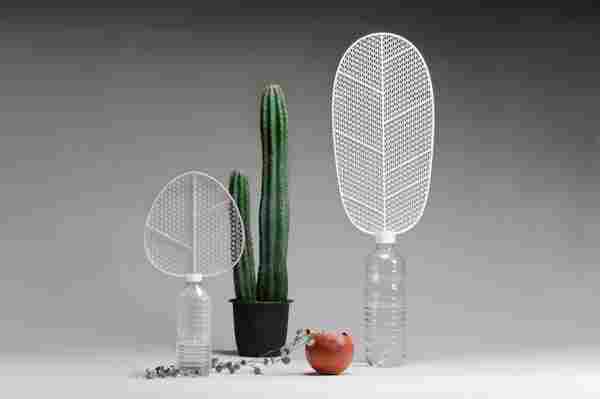
3D printing has evolved and how! Ever since its inception, 3D printing has excited us with the tremendous possibilities it offers us. Granted, we spent plenty of time 3D printing our models for fun, designers now have used this innovative tool to create technologies that can actually save the world. From bottle-caps that can quench the stranded tourist’s thirst to complete structures being 3D printed to offer a safe refuge when in need, there is a solution here that is effectively ground-breaking and has been manufactured by the humble 3D printing technology!
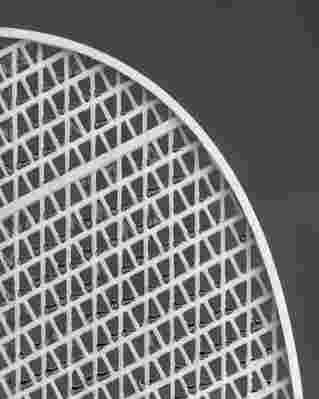
Designed to magically ‘turn air into water’, the Limbe by Fabien Roy is a new sort of dehumidifier that works without electricity, giving its user access to drinking water throughout the day. Its unique leaf-inspired design harks back to how water droplets condense on the surface of leaves, while its 3D printed intricate PET structure helps guide those water droplets down the ‘veins of the leaf’ into Limbe’s central axis which collects the water in your regular plastic drinking bottle.
An unlikely yet enthusiastic new member of the save-the-oceans movement is the Swedish carmaker Volvo. The Living Seawall is comprised of hexagonal tessellated tiles that sport a complex, interwoven structure that mimics the roots of a mangrove forest. The concrete tiles are first cast using a 3D printed mold and then mounted on man-made seawalls across Sydney, promoting the growth of microorganisms (they take to the tiles as they would to mangrove roots) that constantly feed on ocean water, purifying it of toxins, chemicals, and even minute particulate matter.
3D printed from sand, the ‘Spirula’ speakers by the Czech company Deeptime seem like they’re from another planet together! Silica sand was the material of choice. The porous and brittle 3D printed sand cones were treated with Deeptime’s special hardener, resulting in an airtight conch shell. Shaped after the spiral-shaped cochlea in the human ear and inspired by the deepwater squid Spirula, these speakers are anything but ordinary.
The Desert Pavilion was created to be a communal oasis of heritage and micro-ecology. When you look at the renders, the structure is a blend of local Bedouin architecture with space-age technology. The design team has envisioned an innovative use of 3D printed panels by deploying them onto a CNC bent steel pipe system. To simulate a holistic tent-like structure, the team used a hybrid of 3D printed polymer shells on 3D printed concrete topography with the ‘Mesh Relaxation’ parametric strategy.
Created as a collaboration between Formula 1, Designer Parfums, and Ross Lovegrove Studio , the bottles are F1’s debut in the fragrance market, and help capture an olfactory experience that most die-hard F1 fans will relate to… the smells of burnt rubber, brake oil, and wet asphalt. The perfumes don’t literally smell of burning rubber, but evoke a similar representation. Playing with ingredients like black pepper, musks, bergamot, leather, among others, the fragrances, available in a series of 5 bottles, capture the adrenaline rush that is Formula 1.
Apart from the electronics, and the rider, every ounce of the BigRep Nera is 3D printed. From the handlebars to the body, to the seat, suspension, and even the tires, the Nera is an absolutely stunning feat of design and engineering melded together to show how far additive 3D printing has come. The e-bike’s body comes with an edgy, chiseled design that gives it character and strength, and even includes a flexible bumper underneath the seat to absorb shock. Even the airless tires are made from 3D printing, with a lattice structure that gives it both strength and flexibility, allowing it to mimic natural rubber tires.
Yves Béhar and his studio fuseproject worked with tech company ICON to create the world’s first 3D-printed neighborhood in Tabasco, Southern Mexico. A lively 3D-printed neighborhood of fifty 500-square-foot, single-story houses for the poorest communities who are always the last to benefit from innovation and technology. ICON issued its Vulcan II printer for the purpose at hand. In 24 hours a base cement home with walls is built, with roofs, doors, and windows added later on. Vulcan II’s functionality is foolproof against rainfall, power shortages and most dilemmas in rural areas. The slanted roof provides protection against intense rainfall. And the strong base and walls will support the structure against seismic activity.
Designed to show off their advanced titanium additive printing techniques (and also their engineering prowess), they designed the world’s first guitar that can’t be smashed. Literally. After creating a design that they deemed was the strongest guitar ever made (they ran their own crash-test simulations too), Sandvik 3D printed the guitar out of titanium dust using an additive manufacturing process called Direct Metal Laser Sintering.
SHOELAB, created by Martin Sallieres has been developing a 3D weaving technique, creating shoes from one material. By tweaking the properties of this material, the designer can play with density, flexibility, thickness. Very much like nature does. For example, the structure of a tree is very different between the twigs and trunk and is still made from one material. The created mesh is a full polyurethane shoe inspired by the weaving techniques of spiders, with a constant back and forth movement along the shoe cast.
Although 3D printing has just picked up, there are quite a few 3D printed bicycle designs out there. None, however, are made of steel. None of them also look as beautiful as the Arc Bike . Created by the students at TU Delft, based in The Netherlands, the Arc bike has an intricately detailed bike frame made to look like it was woven, rather than printed.
Houseboat Colony For Oslo
Now I know that houseboats are a specialty of Amsterdam , but designer Espen Erikstad thinks otherwise. He feels that something like the Loup de Mer is what Oslo needs and that too for the student community. Ha! I can picture all the boys and girls getting all studious and cramming for their term papers over a round of fish and chips! I don’t buy this story one bit ! For an individual unit, the concept of this houseboat looks pretty neat and spacious. It’s a duplex with ample living quarters and a colony of them co-exiting till the holiday season sets in. For a student accommodation, it looks very extravagant. For a globetrotter like me, I would love to spend some time on this!!
Designer: Espen E. Erikstad
